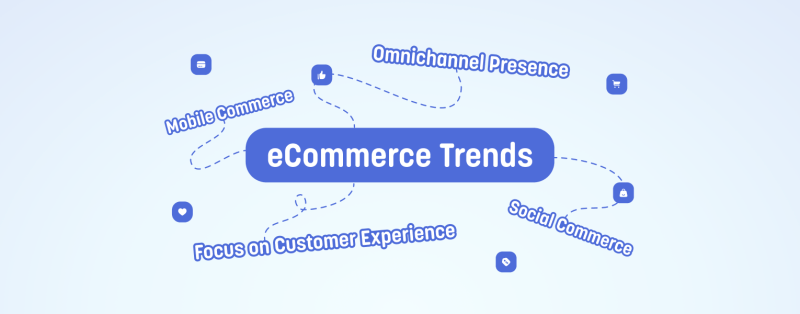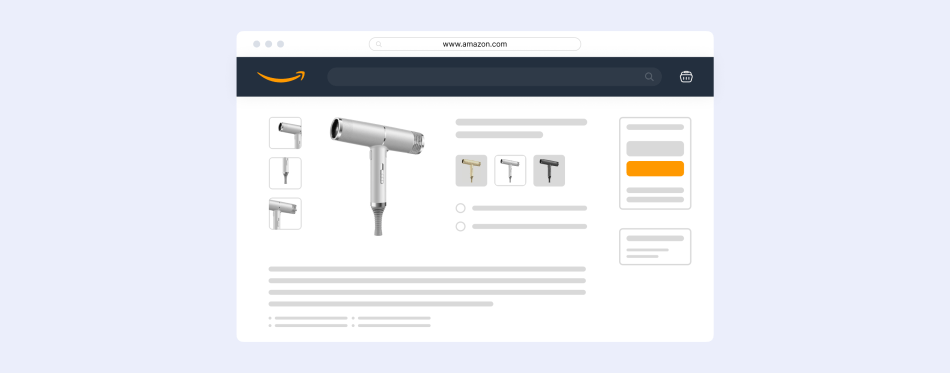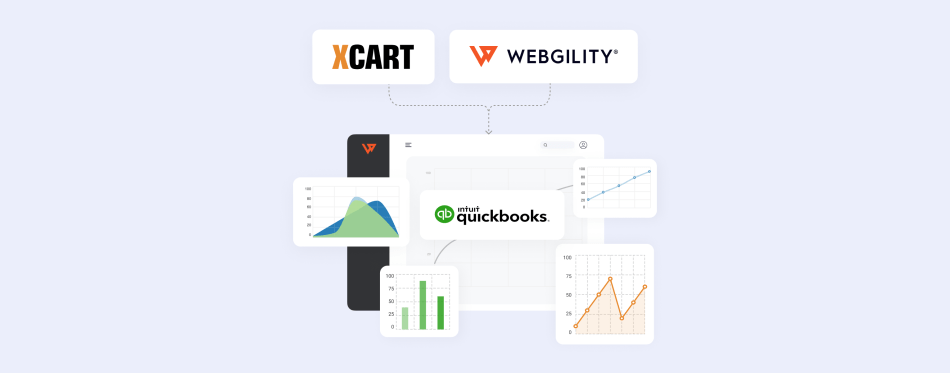What Shapes the Future of eCommerce? Top 7 eCommerce Industry Trends to Watch in 2023
In the world of eCommerce, nothing is constant but change. New technologies and trends emerge regularly, pushing online businesses to adapt to the needs of today’s customers. It especially rings true in the current economic landscape. While business owners just started bouncing back from the post-pandemic supply chain issues, global inflation hit them anew, provoking further logistics bottlenecks and changing consumer behavior.
Under these circumstances, the ability to timely spot emerging trends and pivot your business accordingly is essential for winning more sales and standing ahead of the pack.
We are here to help sellers identify the recent changes in the industry and use these insights to gain a competitive edge. Read on as we uncover seven notable trends that best describe the future of online selling.
1. Customer Experience Is Key
The eCommerce truism that no seller can ignore is that shoppers’ perceptions of a brand’s products, services, and values can impact consumer purchase behavior significantly. As per EY Press Release, 42% percent of respondents admitted they will only buy from brands aligning with their values and providing flexible shopping experiences.
The trickiest thing is to keep up pace with the constantly rising customer expectations in terms of convenient online shopping. In other words, today’s consumers are looking for seamless options to shop whenever, wherever, and however they want, dictating new digital commerce trends for 2023.
2. Omnichannel Presence Matters More Than Ever
The omnichannel strategy involves marketing, selling, and providing customer service on all channels to create an integrated and cohesive customer experience.
The omnichannel approach promises sellers a significant bump in sales along with improved customer loyalty. As for shoppers, it gives them the anticipated flexibility of buying the product how and when they see fit.
Consumers use offline and online sales channels seamlessly, often within the same shopping journey blurring the lines between brick-and-mortar stores and digital commerce.
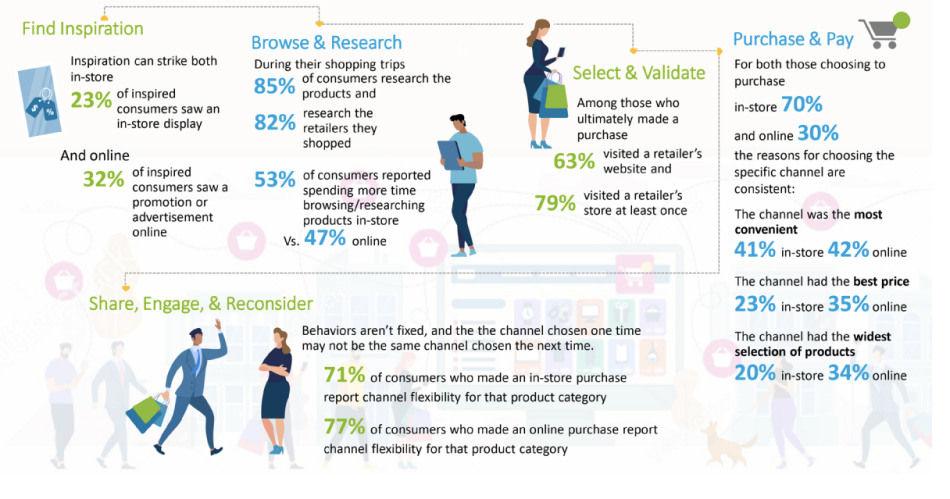
One of the ways to successfully merge the online and offline experiences for your customers is adopting the Buy Online Pick Up In-Store (BOPIS) option. According to Business2Community, 50% of consumers expect flexible shipping and fulfillment options like BOPIS and curbside. At the same time, 93% of surveyed retailers cited that enabling ship-from-store had resulted in a positive uplift in online revenue.
Quick Facts:
50% of consumers expect flexible shipping and fulfillment options like BOPIS and curbside.
Choice in fulfillment option is important, with 44% of consumers preferring multiple fulfillment options when purchasing online.
Today, across categories, 27% of online purchases are fulfilled at the physical store (in-store or curbside pickup).
In a highly competitive eCommerce market, the omnichannel approach can give you a significant advantage over those sellers who underestimate this strategy.
3. Social Commerce Keeps Gaining Traction
The concept of social commerce has evolved enough to become an integral part of your omnichannel strategy. Gone are the days when social networks were used to redirect customers from Facebook, Instagram, or TikTok to your online store for a purchase. Today, social media platforms have become powerful sales channels that embrace all operations: from advertising and brand-building to sales and customer service.
Global social commerce sales are estimated to be $1.298 billion in 2023, with TikTok, YouTube, and Instagram being the most popular social commerce platforms.
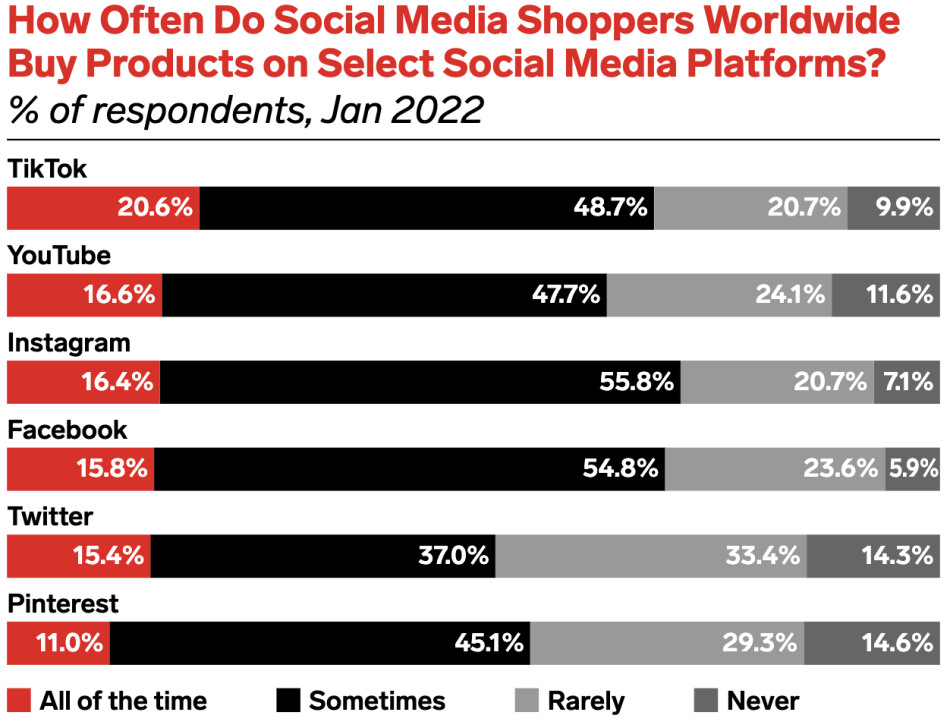
The main reason behind the growing popularity of social shopping among consumers is a more interactive social and shopping experience. For online retailers, it’s the enhanced customer engagement opportunity, and growth-oriented eCommerce businesses make the most of it.
3 Main Social Trends for 2023
Trend 1. Brands double down on authenticity. Authentic communities are prevalent on social media, involving customers in the brand’s story and making them avid brand lovers.
Trend 2. Socials quietly mature out of solely marketing tools. In 2023, more businesses are expected to extend customer experience across social storefronts.
Trend 3. Demand for customer service on social media continues to surge. Businesses consider customer service as another crucial area for social media marketing. Providing assistance during and after the buying process lets businesses meet customers where they are and quickly answer questions, ultimately improving customer loyalty.
4. Mobile Commerce Is Seeing Growth
Partly thanks to social shopping, mobile commerce keeps gaining pace. Along with purchasing through social media channels, buyers are actively using mobile shopping apps. According to Tidio’s research, the time consumers spent on shopping apps in 2021 has increased by 18% year-over-year.
The survey conducted by NewStore in 2022 only confirms this rising trend. As per their findings, 1 in 3 U.S. consumers prefers to shop in-app to all other channels, using mobile shopping apps a few times a week on average.
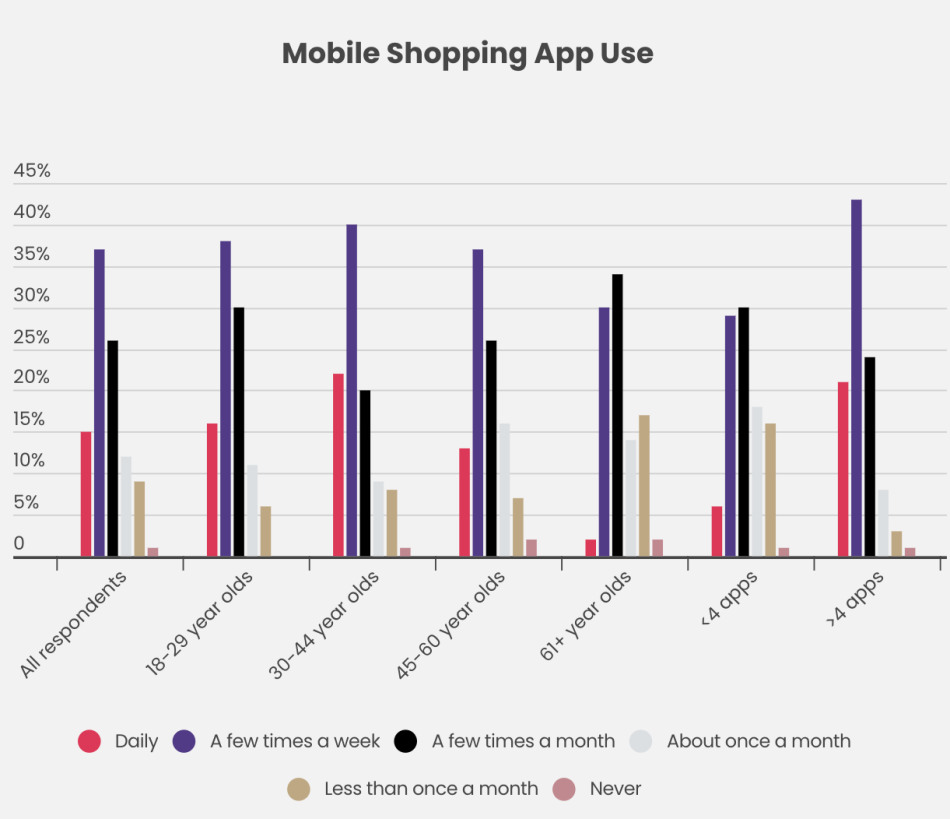
All this makes it essential to design your eCommerce website for mobile-first experiences.
Mobile Responsive vs. Mobile-First Website Design
Although these two concepts have a lot in common, allowing users to view your online storefront from their mobile devices seamlessly, they are not the same. Creating a mobile responsive website doesn’t automatically make it mobile-first.
Mobile responsive design starts on the desktop and then scales down to the smartphone screen. Even though the content and layout are adjusted to fit smartphones, the navigation and download speeds are intended for the desktop view.
Mobile-first design is based on how your online storefront would look on a small screen in the first place. The whole layout is based on providing a mobile user experience: fast download speeds, rich media content to engage with your audience, touchscreen navigation, and more. The layout is also designed to be viewed neatly on tablet and desktop devices.
Pro Tip: Mobile-first design is always responsive, so you don’t need to start a responsive website when you have already implemented a mobile-first one.
With the mobile-first approach, sellers can:
- provide better user experience on mobile devices
- encourage user engagement
- generate more social media leads
- rank higher on Google
And, of course, you can’t go without phone-friendly payment options like Apple Pay or Google Pay.
5. New Technologies Are Being Adopted
Retail businesses are increasingly implementing new digital technologies to enhance the online shopping experience for their buyers, banking on convenience as the primary means of customer retention.
API-Driven eCommerce
API-driven eCommerce, aka Component Commerce, defines composable software architecture combining native and third-party functionalities that communicate via various APIs. Such modularization allows for designing more effective eCommerce ecosystems capable of quickly adopting new technologies and processes without investing in their development and implementation.
The main advantage of API-empowered eCommerce solutions is their operational efficiency and flexibility, allowing for delivering personalized customer experiences from invoicing and distribution to marketing and customer service. And having one in the new customer-centric landscape can make a big difference for retail businesses in 2023.
The stable yet highly adaptable X-Cart software architecture combines all the essentials of a top-notch eCommerce solution with API-incorporated innovative software integrations. You’ll have an interconnected digital ecosystem that meets the needs and wants of your online business — we’ll do the heavy lifting.
Need an Agile eCommerce Solution that Pivots to Ever- Emerging Trends?
Let’s Discuss How X-Cart Can HelpArtificial Intelligence
Artificial Intelligence (AI) has crept into our everyday lives in the form of chatbots integrated into messaging applications, such as Slack, WhatsApp, or Facebook Messenger. Following the ChatGPT craze, more and more users get interested in conversational chatbots.
For eCommerce businesses, intelligent bots can really move the needle in terms of growth, revenue, and customer loyalty. The survey conducted by HubSpot states that 47% of respondents would buy a product from an eCommerce chatbot, and 57% of consumers are ready to get real-time answers using AI-enabled customer service.
The rising consumers’ interest in these AI innovations can be explained by the chatbots’ 24/7 accessibility on your website and social media channels, which helps you deliver flexible purchase and post-purchase experiences.
At the same time, utilizing AI-empowered tools like Hootsuite can help online entrepreneurs generate social media content and create a social marketing strategy.
Voice Commerce
The awareness of voice technology continues to increase. According to the PwC survey, 71% of consumers prefer conducting voice searches to manually entering their queries. Voice assistants help customers discover new items and compare offerings from different brands.
Convenient product search isn’t the only function of voice apps. With the evident rise in voice search adoption comes an increase in purchasing items through voice shopping. The same study shows that 50% of respondents have made a purchase using the voice assistant, and an additional 25% would consider doing so in the future.

The main reasons behind voice shopping popularity among sellers and customers are the benefits that this new trend promises:
| Online retailers | Online customers |
| improved customer loyalty | a fast and simple option for buying products |
| higher customer retention rates | convenience and accessibility for purchasing through a number of devices beyond smartphones |
| competitive advantage | personalized experiences |
No wonder that voice shopping sales are estimated to reach nearly $20 billion by the end of 2022, which is a huge increase from $2 billion in 2018.
Augmented Reality
Augmented Reality (AR) is another game-changing technology actively implemented by big retailers, such as Amazon, Walmart, Nike, or IKEA, to name a few. AR offers a more immersive buying experience that mimics visiting a store in real life and develops a customer’s personal connection with an online brand.
The stats don’t lie: 61% of shoppers prefer retailers with AR experiences. The forecast share of consumers who will have used AR when buying products online worldwide by 2025 also looks impressive.
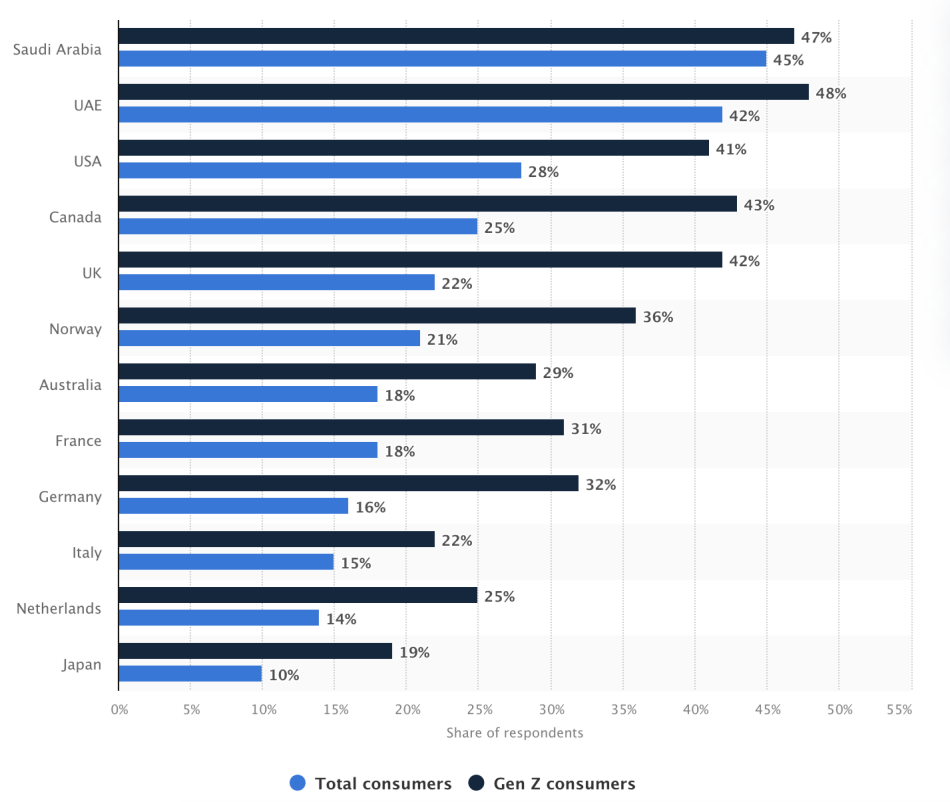
Engaging customers through AR technologies, such as product visualization and virtual try-on tools, can help reduce return rates and save on reverse logistics costs, ultimately accelerating online sales and increasing customer satisfaction.
6. BNPL Payment Options Are a Must
Here’s a rock fact: providing flexible payment options at checkout gives customers more buying power, which can result in a higher order value for online retailers. This is especially topical in the current economic woes that form frugal customer spending habits.
A Buy Now Pay Later (BNPL) service is an excellent illustration of a budget-friendly financing solution. BNPL allows customers to split the payment into several parts and pay over time and lessens the shock of elevated prices. At the same time, sellers are paid the full amount upfront, which makes BNPL a win-win solution for eCommerce businesses and shoppers alike.
As of 2022, an estimated 360 million people were using BNPL services worldwide. By 2027, this number is expected to increase to 900 million BNPL users. Furthermore, a significant share of consumers even believes that Buy Now Pay Later services will eventually replace credit cards someday.
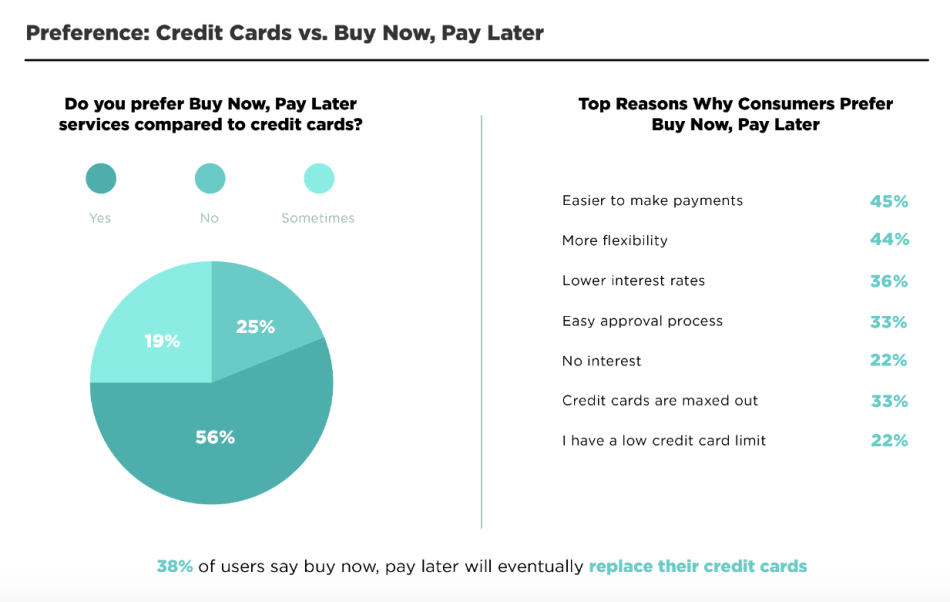
7. Streamlined Fulfillment Eases Logistics Challenges
Unfortunately, logistics issues are not going anywhere, making online businesses balance between the required inventory levels, storage costs, and elevated customer delivery expectations. To reduce order lead times, some brands are shifting from large warehouses to Forward Deploy Fulfillment Centers (FDFC), which help create customer-focused distribution network and match shoppers’ rapid shipping time expectations.
If you sell on Amazon, you can also use the newly-launched Amazon Warehousing & Distribution program, which offers a more effortless and cheaper way to manage upstream inventory. In 2023, Amazon plans to give sellers an opportunity to consolidate their overall inventory (on and off the marketplace) under the Amazon umbrella: from procurements and storage to distribution and order fulfillment. However, please keep in mind that this program is currently in closed Beta testing, so you’ll need to join the waitlist to participate.
Summing Up: Well-Oiled Businesses Win
There’s one throughline in all the trends mentioned above: customers anticipate flexibility and convenience in all areas of eCommerce: from browsing and purchasing to shipping and customer support. And behind any successful online business that fulfills customer expectations stands the technology capable of creating great experiences.
Like with routine car maintenance, don’t put off making any adjustments to your online store operations to stay competitive and grab your fair share of the market. Reach out to X-Cart experts to discuss the solution that will resonate with your customers’ needs and fit your business initiatives.
About the author

